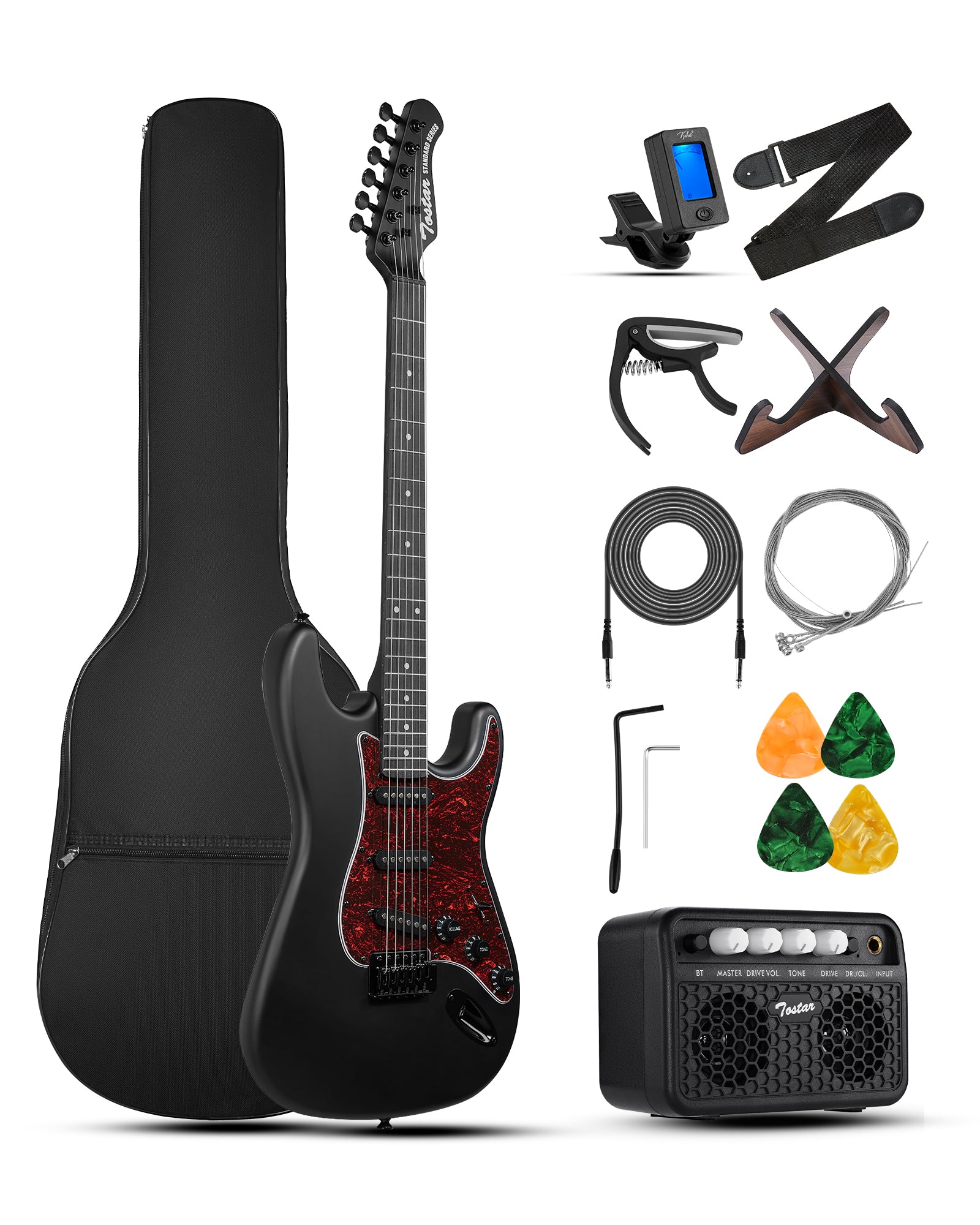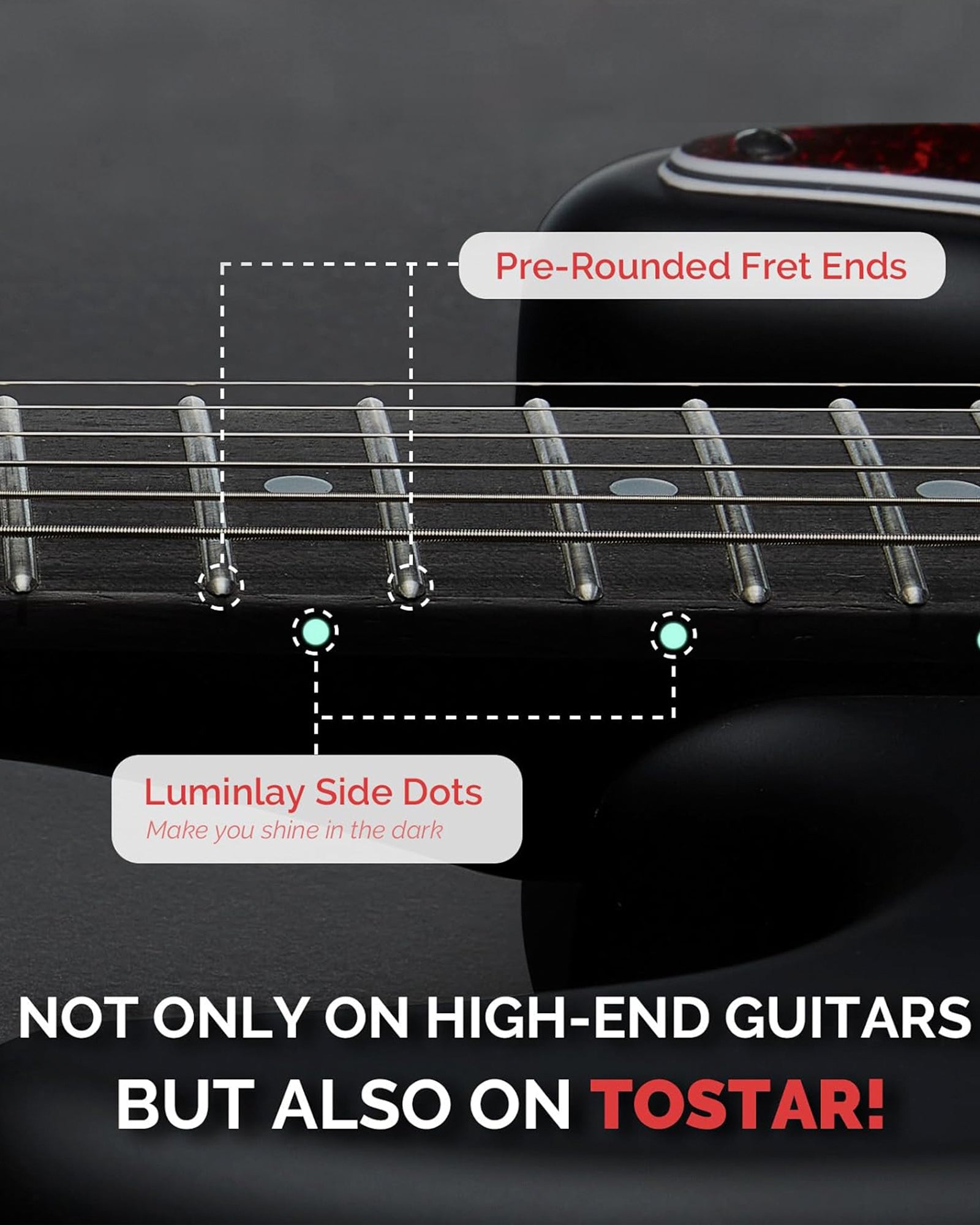
Learning the order and names of guitar strings is one of the first steps for any aspiring guitarist. Whether you’re a beginner picking up the instrument for the first time or an intermediate player looking to solidify your fundamentals, knowing the string names—E, A, D, G, B, E—is essential for tuning, reading tabs, and mastering chords and scales. The standard six-string guitar, tuned to EADGBE, can feel overwhelming at first, but with the right techniques, memorizing the string order becomes intuitive and even fun. This guide draws inspiration from proven methods, like those found in Fender’s approach, and offers practical tools, mnemonics, exercises, and tips to lock in the string names for good. Let’s dive in and make sure you never forget the guitar string order again!
Why Knowing Guitar String Names Matters
The six strings of a standard guitar are the foundation of everything you play—chords, melodies, riffs, and solos all depend on understanding which string is which. In standard tuning (EADGBE), the strings are named after their open note pitches, from the thickest (lowest pitch, 6th string) to the thinnest (highest pitch, 1st string). Knowing these names helps you:
- Tune accurately: Whether using a clip-on tuner or tuning by ear, you need to know which string corresponds to which note.
- Read tabs and sheet music: Tabs label strings by their names (e.g., “E” for low E).
- Communicate with other musicians: Terms like “play the G string” are universal in guitar lingo.
- Learn chords and scales: Many chord shapes and scale patterns reference specific strings.
Memorizing the string order also builds confidence, making you feel more connected to your instrument. It’s like learning the alphabet before writing a story—foundational and empowering.
Understanding Standard Guitar Tuning
Most guitars have six strings, a design rooted in the instrument’s evolution from earlier stringed instruments like the lute. By the mid-1800s, the modern six-string guitar emerged with the standard tuning of E-A-D-G-B-E, which balances playability and versatility. Here’s the breakdown:
- 6th string (thickest, lowest pitch): Low E
- 5th string: A
- 4th string: D
- 3rd string: G
- 2nd string: B
- 1st string (thinnest, highest pitch): High E
Why EADGBE? This tuning strikes a balance between:
- Chord playability: Allows common chord shapes (e.g., G, C, D) to be fretted comfortably.
- Melody accessibility: Enables melodic lines without excessive stretching.
- Open string usage: Facilitates open-string chords in multiple keys.
- String tension: Maintains manageable tension for bending and durability.
Understanding this structure is the first step to memorizing the string names. Let’s explore practical ways to make it stick.
Mnemonic Devices: The Easiest Way to Memorize String Names
One of the most effective ways to remember the guitar string order is by using acronyms or mnemonic phrases. These are catchy phrases where the first letter of each word corresponds to the string names in order. You can memorize the strings in two directions:
From Thinnest (1st) to Thickest (6th): E-B-G-D-A-E
This order starts with the high E string (1st) and moves to the low E string (6th). Here are some memorable phrases to try:
- Every Bunny Gets Drunk At Easter
- Eddie Buys Great Donuts Always, Eh?
- Elephants Break Guitars During Annual Events
From Thickest (6th) to Thinnest (1st): E-A-D-G-B-E
Starting with the low E string (6th) and moving to the high E (1st) is often more intuitive for beginners, as it follows the visual layout from top to bottom when holding the guitar. Try these:
- Eat Apples Daily, Get Better Eventually
- Elephants Always Do Great Big Escapes
- Every Ant Dreams, Great Bees Excel
Pro Tip: Create your own phrase! The quirkier or more personal, the better it sticks. For example, if you love sci-fi, try “Extra Aliens Discover Galactic Blackholes Endlessly.” Write it down and say it aloud daily for a week to cement it in your memory.
Visualizing the Strings on the Fretboard
The fretboard (or fingerboard) is where you’ll interact with the strings, pressing them against frets to change pitch. Visualizing the string order on the fretboard reinforces memorization. Picture the guitar facing you, strings running vertically:
6th (Low E) |---|---|
5th (A) |---|---|
4th (D) |---|---|
3rd (G) |---|---|
2nd (B) |---|---|
1st (High E)|---|---|
Practice pointing to each string and saying its name aloud, starting from either end. For example, touch the thickest string and say “Low E,” then move to A, D, and so on. Repeat in reverse order to build flexibility.
Practice Exercises to Reinforce String Names
Memorizing string names is one thing; making them second nature requires practice. Here are exercises to help:
-
String Name Drill (5 mins):
- Pluck each string open and say its name (e.g., “Low E,” “A,” etc.).
- Go from 6th to 1st, then reverse. Repeat 10 times, increasing speed.
- Use a metronome at 60 BPM to pluck and name each string on beat.
-
Tuning Practice (10 mins):
- Use a clip-on tuner and tune each string to its correct note (E-A-D-G-B-E).
- Say the string name as you tune (e.g., “Tuning the G string”).
- Try tuning by ear using the 5th-fret method: 5th fret of low E (A note) matches open A, 5th fret of A (D) matches open D, etc. (Exception: 4th fret of G matches open B.)
-
Chord and String Connection (10 mins):
- Play simple open chords (e.g., G, C, D) and name the strings you’re fretting.
- For example, in a G chord:
E|--3----(G, 1st string) B|--0----(B, 2nd string) G|--0----(G, 3rd string) D|--0----(D, 4th string) A|--2----(A, 5th string) E|--3----(E, 6th string) - Focus on which strings are open vs. fretted, reinforcing their names.
-
Random String Callout (5 mins):
- Have a friend or use an app to call out a string number (e.g., “4th string!”).
- Pluck and name the string (e.g., “D”). Aim for instant recall.
Using Songs to Reinforce Memory
Playing songs that emphasize open strings helps cement the string names. Try these beginner-friendly tunes, focusing on the open strings involved:
-
“Sweet Home Alabama” (Lynyrd Skynyrd): Uses open D, G, and A strings in the main riff.
D|--0----(open D, 4th string) G|--0----(open G, 3rd string) A|--0----(open A, 5th string) -
“Horse with No Name” (America): Relies on open E, A, and B strings.
E|--0----(open high E, 1st string) B|--0----(open B, 2nd string) A|--0----(open A, 5th string) -
“Wonderwall” (Oasis): Features open G and D strings in the chord progression.
G|--0----(open G, 3rd string) D|--0----(open D, 4th string)
Look up tabs for these songs on sites like Ultimate Guitar. As you play, say the string names aloud to reinforce memory.
Common Challenges and Solutions
- Mixing up high and low E: Both are E, but the 6th string is thicker and lower-pitched. Visualize the low E as “heavy” and the high E as “light.”
- Forgetting order mid-practice: Keep a mnemonic phrase written on a sticky note near your guitar.
- Slow recall: Practice naming strings without looking at the guitar to build mental mapping.
- Overwhelm with other theory: Focus solely on string names for a week before tackling notes or chords.
Enhancing Memorization with Visual and Tactile Cues
- Label the strings: Place small stickers on the headstock or nut with string names (e.g., “E6,” “A5”) for a week.
- Draw the fretboard: Sketch the six strings and label them E-A-D-G-B-E. Post it where you practice.
- Tactile association: Pluck each string while saying its name to pair sound with memory.
Why the TOSTAR TST-130 Helps Beginners Learn String Names
For beginners learning string names, the TOSTAR TST-130 Electric Guitar Kit is an excellent choice. Its 39-inch solid poplar body and SSS pickups deliver clear, distinct tones for each string, making it easier to hear and memorize their pitches. The sealed tuners ensure stable tuning, so you can focus on learning rather than constant retuning. The ergonomic C-shaped maple neck and laurel fretboard provide a comfortable grip, encouraging longer practice sessions. Plus, the kit includes extra strings, so you can practice restringing while reinforcing string names. Lightweight at around 13 pounds, it’s easy to handle for new players. Check it out: Tostar TST-130

Practice Routine for Mastery
Dedicate 30 minutes daily for a week:
- Warm-Up (5 mins): Pluck and name each string, 6th to 1st and back, using a mnemonic.
- Tuning Drill (10 mins): Tune by ear or tuner, naming each string as you go.
- Chord Practice (10 mins): Play G, C, D chords, naming strings for each.
- Song Application (5 mins): Play a riff from “Sweet Home Alabama,” calling out string names.
Record yourself naming strings to track progress. By day seven, aim for instant recall without hesitation.
Resources for Further Learning
- Online Lessons: Justin Guitar’s YouTube channel offers tuning and string-naming tutorials. Fender Play has structured beginner courses.
- Communities: Join Reddit’s r/guitar for tips and peer support.
- Apps: Yousician or GuitarTuna includes tuning exercises that reinforce string names.
Conclusion
Memorizing guitar string order and names—E, A, D, G, B, E—is a foundational skill that unlocks tuning, chords, and songs. With mnemonics, practice drills, and songs, you’ll internalize the string names quickly and confidently. The TOSTAR TST-130’s clear tones and beginner-friendly design make it a great companion for this journey. Keep practicing, stay patient, and soon, naming the strings will feel as natural as strumming. Pick up your guitar and let those strings sing!







How to String an Electric Guitar: A Complete Beginner's Guide
Introducing the New Tostar TST-110 Electric Guitar: Your First Electric Guitar Journey Begins Here